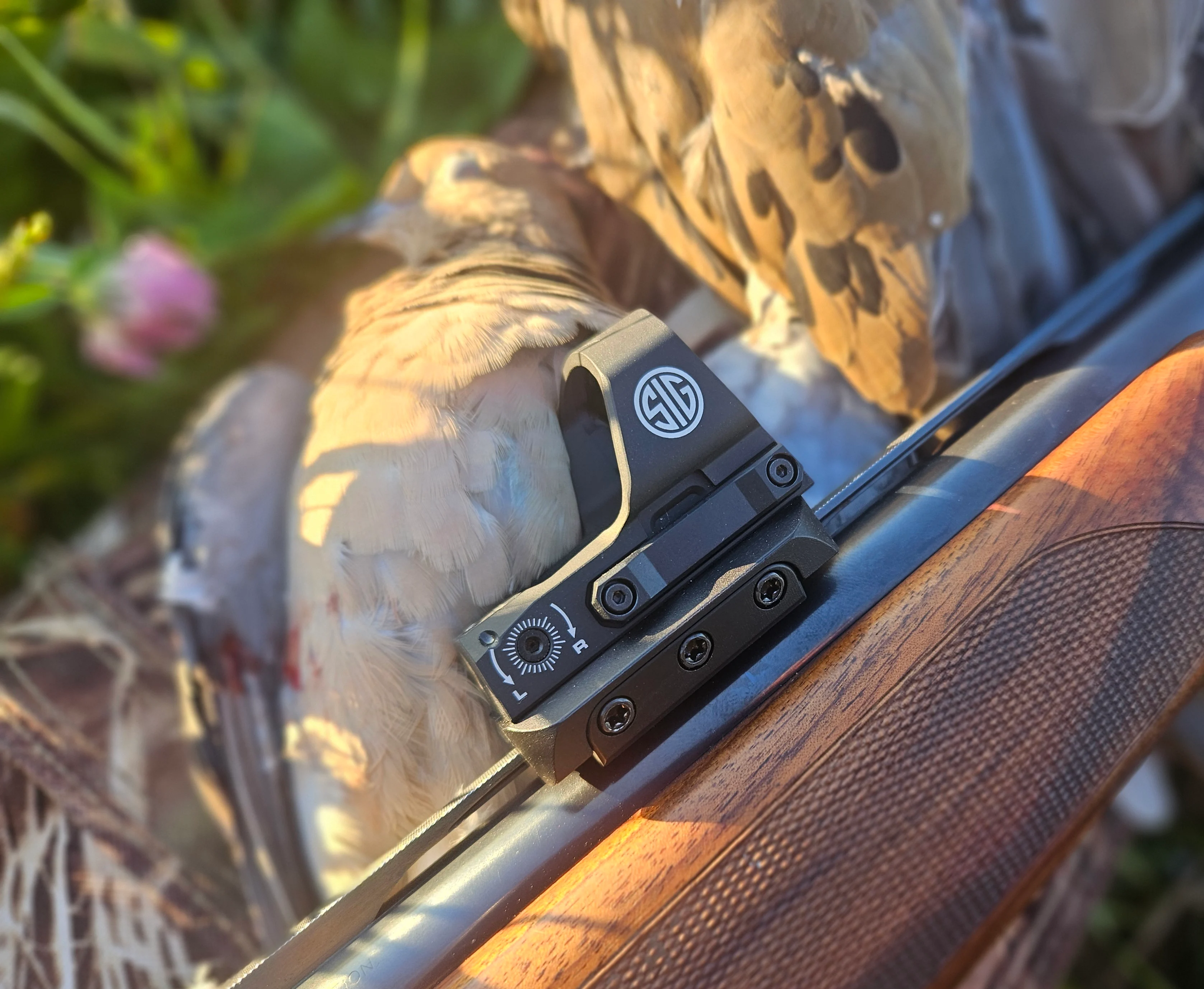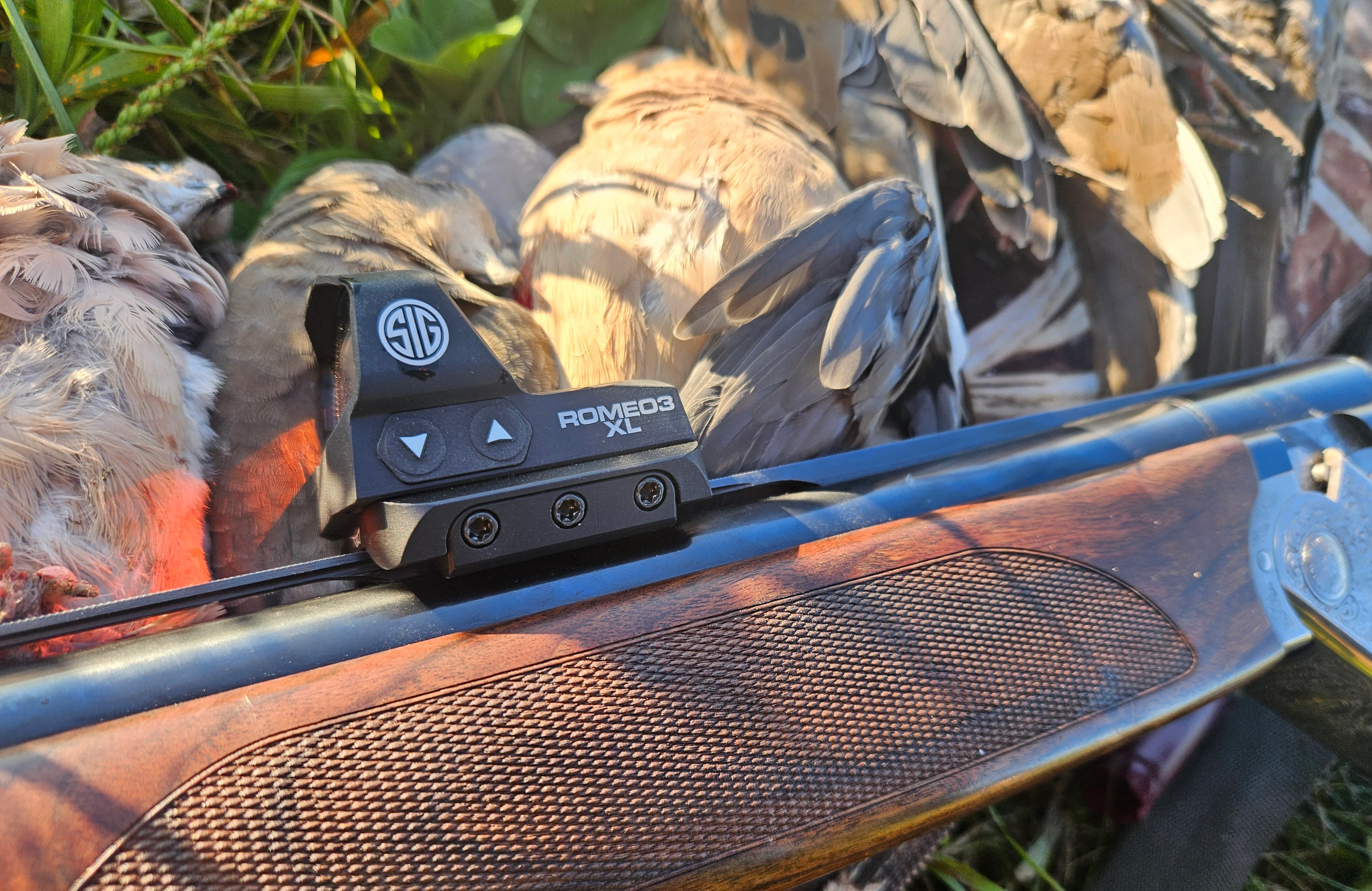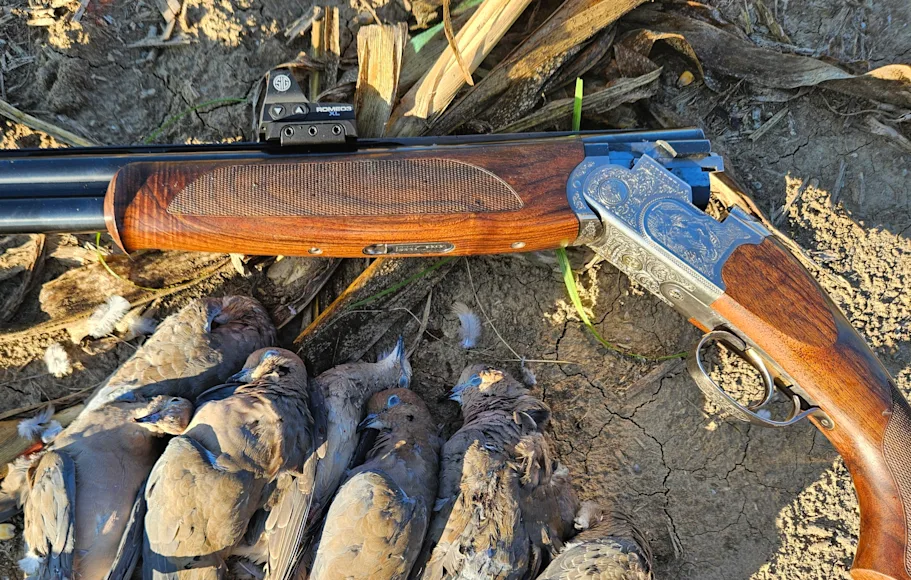As gun and sight makers start pushing red dots as a wingshooting accessory, it seems like my job to try them out. So I took one dove hunting earlier this season. That hunt was the end result of an on-and-off exploration of dot sights on shotguns that started this spring when Aimpoint sent me their new rib-mounted ACRO S-1.
Apparently red dots on waterfowl guns are a thing in Europe, as I have seen videos of Swedes shooting geese with Aimpoints. If you look back fifteen years, you can spot EoTechs on 11-87s in the “Flyway Highway” TV show. I even remember seeing a red dot on a trap gun at the Grand American back in the mid-90s. It’s not a completely new idea, but now, with Beretta and Mossberg offering optic-ready waterfowl guns and with Aimpoint making sights, it seems like red dots on upland and waterfowl guns are becoming a trend.
I am a fan of red dots on turkey guns, but was not, and still am not, convinced they are a necessity on guns for feathers and clays. They may have their place, though, and I have learned a thing or two about what works for me and what doesn’t and who might benefit from a red dot on their gun. Here's my take.

Red Dots for Moving Targets
The ACRO—though great for pistols, carbines, and rifles—has too small a window and too thick a frame for easy flying-target acquisition. Period. The Mossberg’s receiver cut sets the sight too close to the bore. This is great for turkey hunting, but not so much for wingshooting.
It seems counter-intuitive, but a red dot on a shotgun should offer a clear field of view without the barrel or the bead in the shooter's vision. I learned this almost by accident the day I tried the ACRO on trap targets. After struggling to find them, I remembered I had brought my turkey gun, which has a Leupold DeltaPoint mounted on it, for patterning. This red dot has a big window, a skinny frame, and sits up on a receiver mount. With that setup, I went from flailing at trap with the Aimpoint to breaking 23 of 25 immediately.
What did that show me? Visibility is the key. You have to be able to see through and around the sight, and it helps if there’s no barrel in the sight picture. The setup I ended up with was a Warne universal rib mount (Meadow Creek mounts also fit on shotgun ribs and work equally well) and a Sig Romeo3 XL, which I determined to be the reflex sight with the biggest sight window. I put the mount as far back on the rib of a Beretta 687 as I could. The Romeo3 XL is a nice sight, too, with 25,000 hours of battery life, a side door so you can change batteries without removing it from its mount, and easy-to-use on/off bright/dim controls.
The Beretta/Warne/Sig rig was easy to hit with from the beginning, and before long, I had a 24 of 25 at skeet under my belt with the rig and was ready to hunt. For the first dove hunt of the year, we set decoys up in a strip of cut corn, and my shots came at birds fluttering in to the spinner at 20-25 yards, plus a couple of short crossers. I didn’t hit quite as well as I like to think I would have with an unsighted gun, but I didn’t do badly, either. It was easy to put the dot on a bird or just in front of it, and when I had seven birds and twice as many empties, I declared the experiment a success and switched to a regular gun.
I had to hold my head straight up and well above the stock to see the dot, and if I were setting up a gun for red dot shooting, I’d want a very high comb. But, this is theoretical because I’d rather shoot a gun without a red dot, even though, and I’ll say it, shooting targets with a red dot is fun.

The Benefits of Red Dots for Wingshooting
Some shooters could benefit from a red dot. Cross-dominant shooters can keep both eyes open and use a dot sight without any trouble. Is it better to learn to shoot from your dominant-eye side? Yes, but the older you get, the harder it is to make that switch. A red dot could be a great solution for cross dominance, and it allows you to shoot with both eyes open, and our eyes are designed to work together.
I also believe that occasional shooters might do better with a red dot sight. If you don’t practice much and only go on one or two hunts a year, it’s not hard to put the dot on a going-away pheasant or on an incoming duck hanging over the decoys. Plus, you’ll probably do better than you would aiming with the bead of a shotgun. I think of it as similar to shooting traditional archery versus shooting a compound with a sight. Both take practice, but the traditional setup takes a lot more practice.
I am not judging anyone, either. If a red dot helps you hit birds and makes hunting and shooting more enjoyable, I think that’s a plus for red dots. As for me, my friends who have seen my gun are aghast at what I have done to my handsome O/U. Relax, I tell them. It’s like a temporary tattoo. It comes off. I’ll put that Sig on a pistol or a turkey gun and probably put the Acro on another turkey gun, and I’ll leave my wingshooting and claybreaking guns the way they came.


